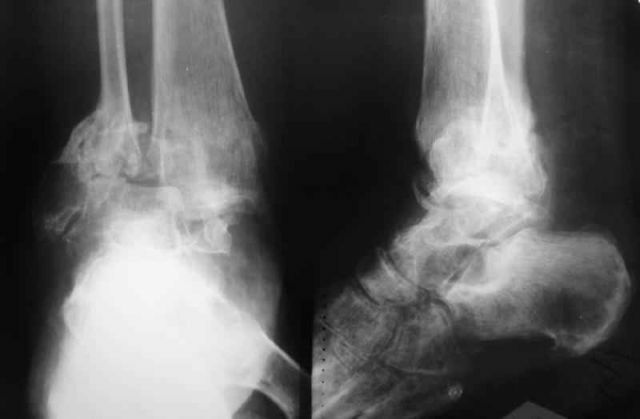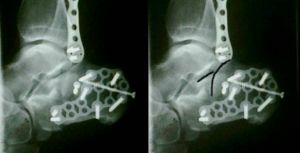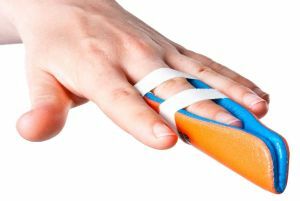 In everyday life, almost every person has to face minor and minor injuries to the limbs. The most common types of trauma include dislocating fingers and toes.
In everyday life, almost every person has to face minor and minor injuries to the limbs. The most common types of trauma include dislocating fingers and toes.
Under the dislocation of the finger on the hand, it is necessary to understand the displacement of several bones of the finger due to a received injury or injury.
The dislocation of the same toe is one of the rare injuries. It is subdivided into different species depending on the site of injury and the severity of the joint deformity.
Such activities will greatly facilitate the pain syndrome in humans, and in the future will contribute to the speedy recovery and recovery of the limb.
Contents of the article
- Characteristics of the dislocated fingers
- Injury of the upper extremities
- Dislocation of the toes
- Factors that provoke injuries of this kind
- Symptomatics and basic signs
- Dislocation varieties
- Diagnosis of the dislocation of the phalange
- How to help the victim?
- Treatment of injured limb
- Rehabilitation measures
- Possible complications
- Preventive measures
Characteristic features of the dislocated fingers
Dislocation itself is one of the types of injuries that result in the displacement of the contiguous finger joints of the finger.
Injury of upper extremities
A dislocation of the finger on the arm is a very painful injury. This is due to the fact that it is on the fingers of the hands that there is a huge number of nerve endings, which in turn acutely and painfully react to any traumatic injuries from the outside.
In medical practice, doctors often have to face the dislocation of the thumb and forefinger.
Dislocation of toes
Dislocation of the finger on the lower limbs is much less common, but it also gives the patient a lot of unpleasant sensations and 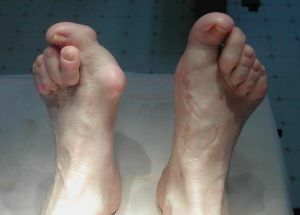 discomfort.
discomfort.
Depending on the degree of damage, the dislocation of the toes on the foot may be interphalangeal and metatarsophalangeal.
In order to maintain the functioning of the motor activity of the damaged finger, it is necessary to provide first aid in a timely manner, which in turn will consist in the correction of the damaged joint.
Factors that cause injuries of this kind
It would seem that getting a finger dislocation is quite difficult. However, in modern life, with daily loads, absolutely minor injuries and bumps can lead to the displacement of the joints on the fingers.
The most common causes of dislocation are the following:
- It is very easy to earn a finger dislocation, by producing sloppy or abrupt movements of the limbs. So, for example, there will be enough impact on the limb or a slight drop.
- With injuries of this nature, almost daily encounter athletes who are engaged in volleyball
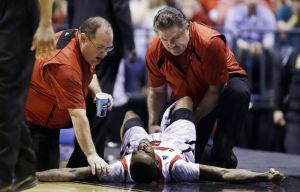 or basketball. Usually this is due to improper feeding or catching the ball. For this purpose, athletes are recommended to use special bandages on their hands. They largely protect the limb from damage and injury.
or basketball. Usually this is due to improper feeding or catching the ball. For this purpose, athletes are recommended to use special bandages on their hands. They largely protect the limb from damage and injury. - A dislocation of the finger can be obtained during the self-compression of the joints. Many people like to knead fingers, although at the same time this procedure is dangerous for human health.
- A dislocation of the toes on the lower limbs usually obtains with a strong impact on the foot of the .For example, it may be an unsuccessful landing on the floor or a hard surface or a jump from a height.
Symptomatology and main signs of
When a finger is injured on the limbs, the following discomfort symptoms appear in the victim:
- in the place of damage instantly there is a strong and sharp pain;
- in case if you continue to move the damaged finger, the pain will only increase;
- the place near the damaged joint in a short time interval will begin to swell strongly;
- the shape of the finger can change significantly( joint deformation occurs);
- the more the limb swells, the ability to perform any independent motor acts decreases.
Species of dislocations
Specialists classify all dislocations of the fingers and toes into the following subtypes:
- Fresh trauma .The dislocation is called fresh, when no more than a couple of days have elapsed from the time of traumatization.
- Stale .Such a dislocation is advisable to call in the event that the joint damage occurred a few weeks ago.
- Traumatic injury to .This kind of dislocation occurs when the finger damage happened more than a month ago. Dislocations of a chronic nature are most often impossible to correct only by the physician. In this situation, it is logical to resort to surgical intervention.
As dislocations can be divided into the usual, that is, when the finger on the limb is injured several times in a row in the same place, as well as intraarticular and periarticular( they are more severe and dangerous).
Most often there is a dislocation of the thumb and index finger, in the second place is the little finger. It is easy enough to damage it, both on the foot and on the forelimbs.
Diagnosis of dislocations of the phalanx
 When getting injured, it is very important to seek medical help as soon as possible. Only a qualified specialist can determine the type of injury and prescribe effective treatment.
When getting injured, it is very important to seek medical help as soon as possible. Only a qualified specialist can determine the type of injury and prescribe effective treatment.
In order not to confuse dislocations with a fracture or subluxation, the only correct method of diagnosis is conducting a x-ray examination. Based on this, the doctor draws conclusions and makes the correct diagnosis.
How to help the victim?
If there is no possibility to get to the hospital in the near future, then it will be necessary to provide medical assistance to the injured person.
For this it is necessary to perform the following manipulations: 
- it is necessary to impose a bandage on the damaged joint( it is important that it is not very tight);
- after you need to use a bandage to fix a sick finger to a healthy one;
- in the event that the pain syndrome is clearly pronounced and acute, the victim can be offered any of the types of painkillers.
After carrying out all the manipulations, it is very important to take the patient to a medical facility for more thorough diagnosis and further treatment.
Treatment of injured limb
Treatment of dislocation should be performed without fail following the recommendations of a specialist. The main goal in this case is to exclude the possibility of fracture and reduce the risks of complications after the traumatization.
Treatment of the herb can be carried out according to the following samples:
- Dislocation without complications can be administered under general anesthesia and anesthesia.
- Aged dislocation is most often eliminated by performing an operation. When all recommendations are implemented, the recovery period occurs quickly enough.
- When the correction does not give a positive result to , the doctor can recommend the use of a special apparatus Volkov-Oganesyan. With its help, the damaged joint is restored and heals several times faster.
- For minor traumatizations of , the patient is recommended to use warming compresses and trays based on medicinal herbs. At the same time, it is necessary to adhere to bed rest and try to perform as few movements as possible of the damaged limb.
- The treatment of dislocations also includes taking painkillers and anti-inflammatory drugs.
With timely adjustment of the joint, the likelihood of avoiding unpleasant consequences increases. If all the rules for caring for a sick joint are met, a full recovery will occur 3-4 weeks later.
Rehabilitation activities
After the surgery has been performed or performed, the patient will need to undergo a special course of rehabilitation. 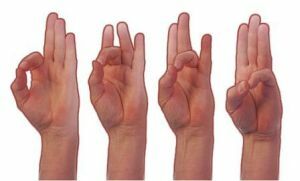
It can include such procedures:
- therapeutic massage;
- finger gymnastics( physiotherapy exercises);
- physiotherapy of damaged limb( heating, electrophoresis);
- use of warming compresses and ointments.
Possible complications of
Possible complications include the following:
- rupture of ligaments, tendons or muscles;
- trauma to nerve endings or vessels in joint injury sites;
- increases the likelihood that the dislocation will occur after some time repeatedly;
- a few years after the dislocation of itself can declare arthritis( it often manifests itself in the elderly).
Preventive measures
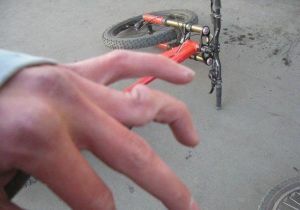 In order to keep your joints intact, you need to do any physical work, and during sports use special protective equipment, for example, bandages on the hand, knee pads.
In order to keep your joints intact, you need to do any physical work, and during sports use special protective equipment, for example, bandages on the hand, knee pads.
If the dislocation was diagnosed earlier, then to reduce the risk of re-trauma you will need to practice special exercises( gymnastics).This will strengthen the muscles and ligaments of the limb.
A dislocation of the fingers on the arm or leg can be earned absolutely by everyone. The most important thing in this situation is not to panic, but to urgently provide first aid and send the victim to the hospital.
Only timely assistance will help you recover faster and recover from injury!


